Sometimes you just have to head up the road to catch the sun rising over the horizon at a favoured castle ruin.



I have photos for sale of Dunnottar Castle over on shiny.photo.
Sometimes you just have to head up the road to catch the sun rising over the horizon at a favoured castle ruin.



I have photos for sale of Dunnottar Castle over on shiny.photo.
I’ve lost count of the number of times I’ve driven through St Fillan’s over the years, always en route to somewhere else the other end of the A85, barely stopping a handful of times to take the obvious photo the length of Loch Earn. Even the couple of craggy rocky outcrops on the way into the village were much admired from the road but I think I stopped once to shoot them for their own sake.
So last Sunday afternoon I rectified matters, slowed down and parked in the usual layby and walked back through the village, over the road, around the golf course and up St Fillan’s Chair, admiring the mountains behind a little closer.
A day of symmetry – on the way out I noticed a view up the path to a small Church of Scotland kirk was particularly appealing; on return, the view along the loch was pure calm still reflection in the water.



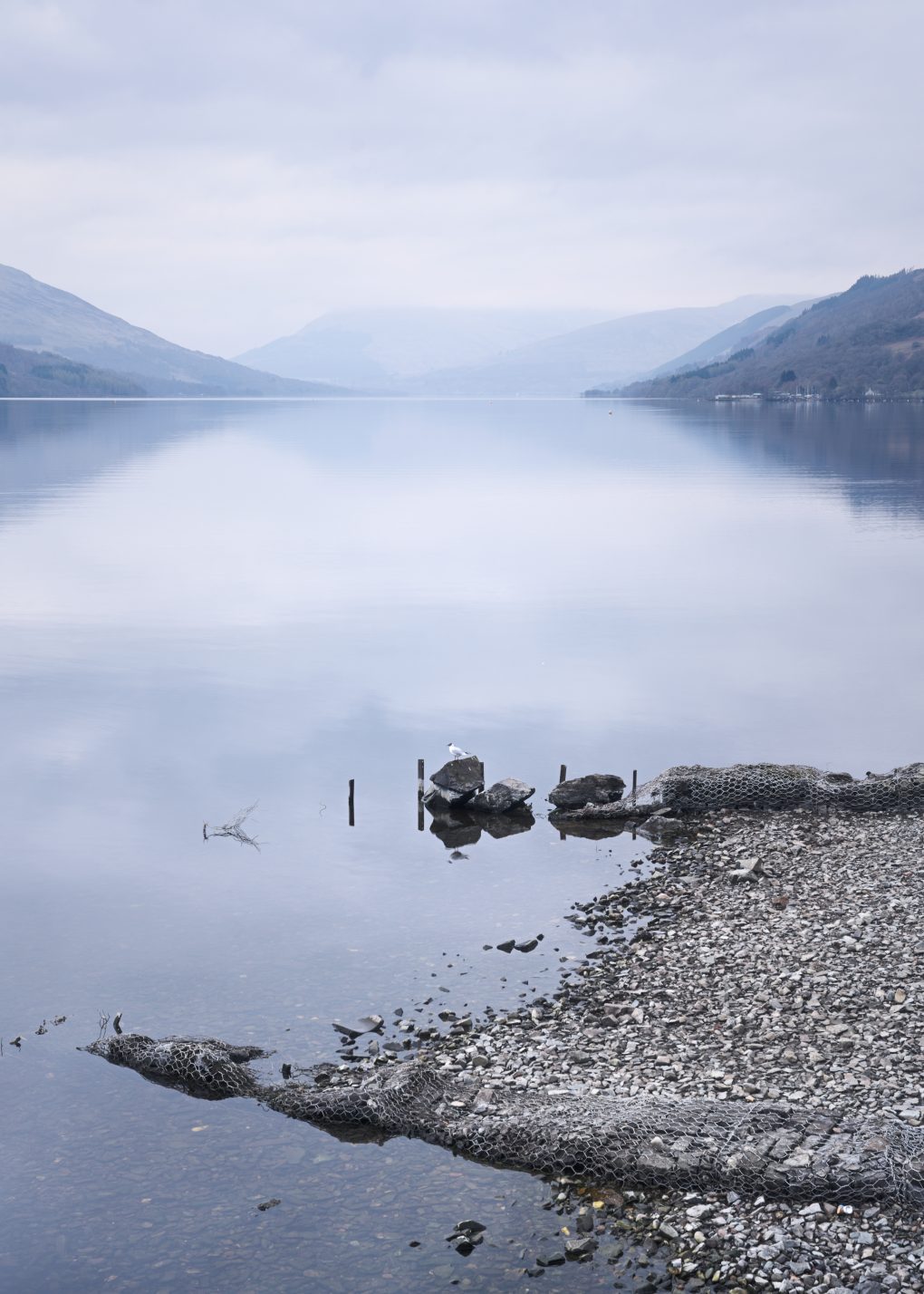

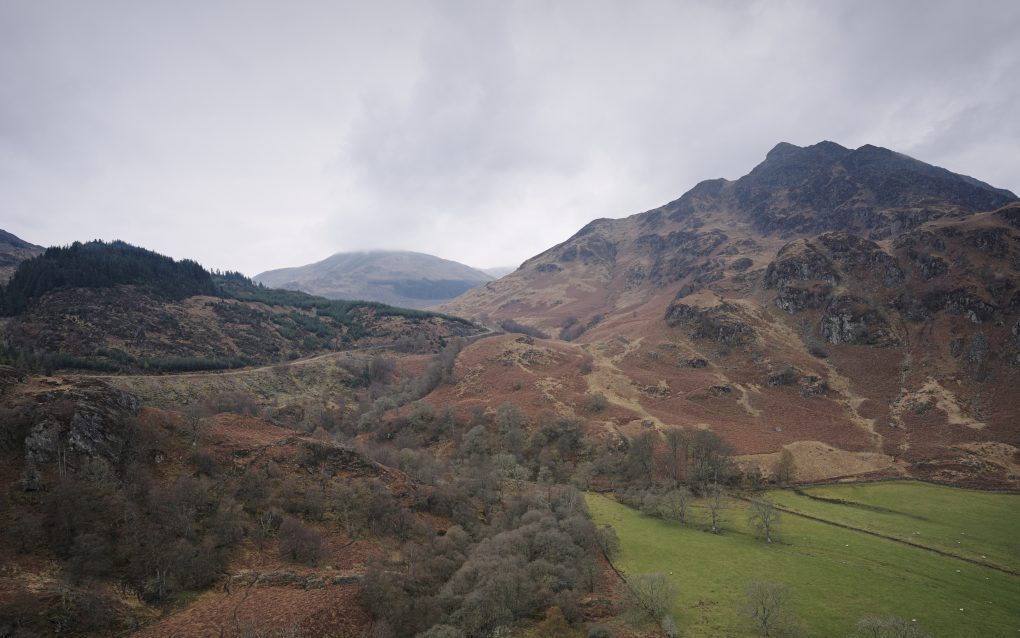

Prints and things are available from my main ShinyPhoto website: Loch Earn.
For the second day of my holiday last Autumn, I got up – again! – at a ludicrously early hour and drove from Tongue round to the Assynt peninsula, to my favourite viewpoint for sunrise.
It was some drive.
All the way from Tongue to Loch Assynt without seeing another car. Bliss.
Take the A838 road (abused as part of the ghastly NC500 coastal route) via Durness at 5am in the pitch black, the wind blowing a gale, rain + windscreen wipers on full speed.
Picture avoiding a herd cows intruding across the road. Avoiding more than 10 deer.
At that surreal pre-caffeinated hour of the morning, seeing a signpost advertising “serving local seafood” makes me picture a restaurant waiter taking a scallop’s order at table.
The music of choice was Arcade Fire Mountains beyond Mountains – a song bemoaning city life with its world so small – a mental image contrasting with my surroundings, passing rural Scourie, pop 132 – the sort of place that takes longer to say the name than drive through.
And so I arrived at Rhicarn – the landscape black, clouds a grey plasma, just a little bit windy…
And the sun rose. Quite spectacularly, casting brilliant crepuscular rays from the horizon and underside edges of clouds.
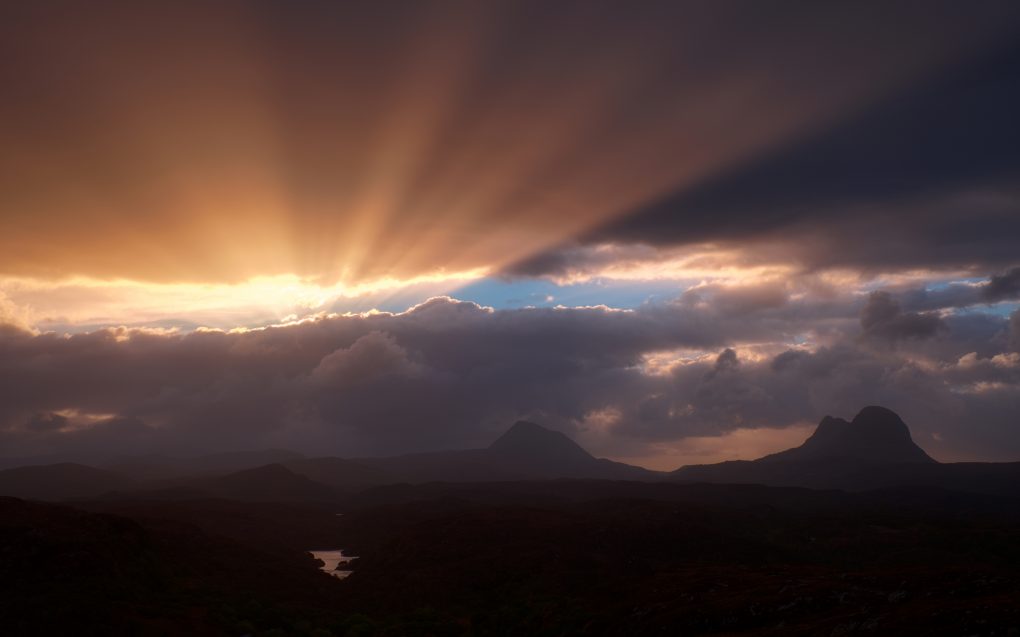




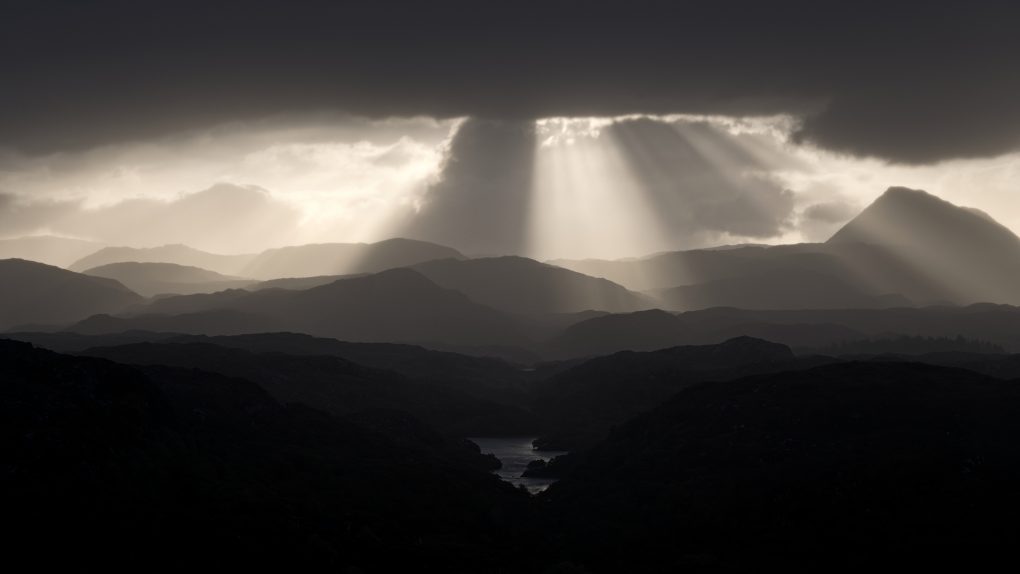
Throughout the sunrise, the light was spectacular – brightly illuminating colourful clouds.

…and casting a subtle hazy glow over the morning fog across Little Assynt, outlines of hills receding into the mist


Perhaps my favourite image from the morning has to be Suilven, the unmistakable mountain on the horizon, catching a subtle patch of oblique sunlight on a flank.

Once the sun rose, I explored the Falls of Kirkaig outside Inverkirkaig. A nice long walk through lumpy landscape, to a large thundering waterfall.

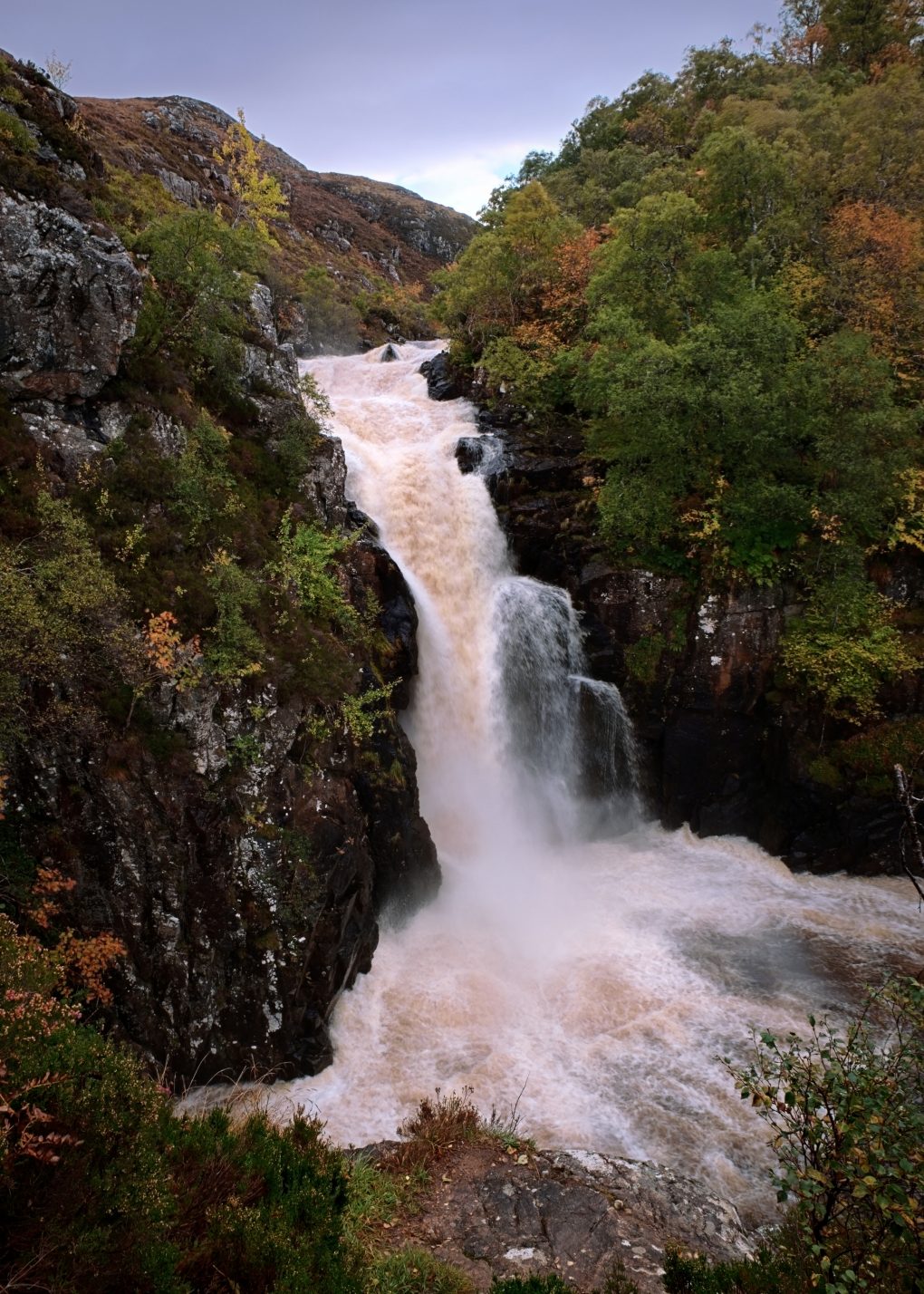
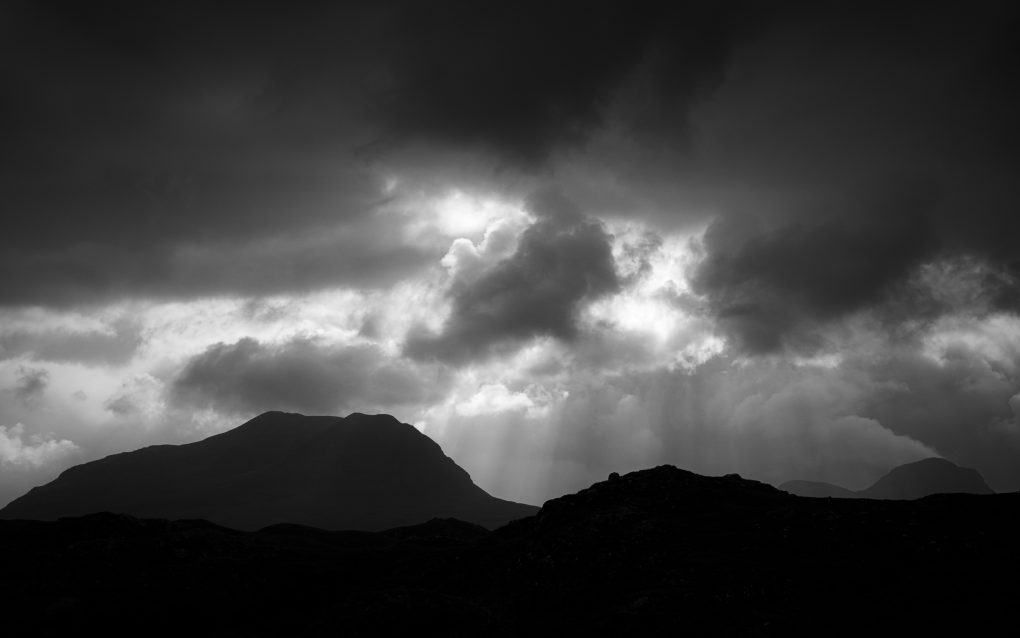
Returning to above Rhicarn, clouds had flowed in obscuring the mountains on the horizon, so I experimented flying the drone to admire the surrounding landscape.
There’s something about finding a thin strip of old tarmac that obviously used to be a road – it makes a connection with the story and heritage of a location. From researching on Pastmap, it appears there was not much road here at all throughout the 19th century – presumably a cattle drovers’ track or similar. Then the old tarmac was laid, following a circuitous path around the gneiss rock hills. Finally, some time after the 1960s, a new road, now the B869, was laid through it in a boring straight line, the old route relegated to a carpark yet visible and walkable either side of the road.

Behind this scene, on the way to Clachtoll, lies some beautiful Karst landscape (cnoc’n’lochan or knock-and-lochan), formed by underground erosion of softer rock, leading to a classic pattern of rocky knolls interspersed (almost 50-50 by area) with lochs.


Further along the road lies the Maiden Loch, of which I’ve been very fond since first catching sight of it years ago. That first view was on a sunny afternoon, the sky blue reflecting in the water. I flew the drone over it, to admire the gneiss landscape all the more…

Some of the above photos are available on my photo gallery website: ShinyPhoto: Assynt
Two photos from a stroll down the road on a warm summer evening


Prints of The Leader are available from my photography website, ShinyPhoto.
A few photos from Sunday afternoon’s explorations around Loch Rannoch.
We walked through the Black Woods; whilst flying the drone near Camghouran I discovered remains of a building – a pile of stones and hints of mounds in the earth possibly in the shape of a former but’n’ben croft? – in a clearing in the forest.

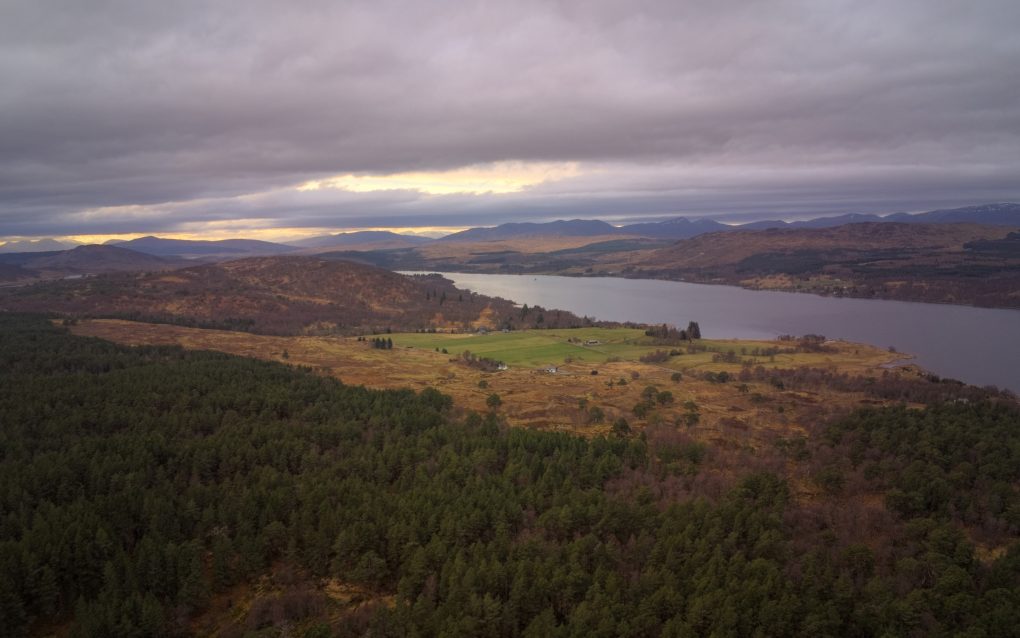

Sunset on the shore was beautiful; contrasting deep blue ominous dark blue clouds and vibrant orange sunset across the water.





Prints of some of these photos will be available through my ShinyPhoto website: photos around Loch Rannoch.
I’ve been over 3000′ twice before now – but for one I stopped short of the summit, and for the other we took the ski-lift up, so neither really counts as Munro-bagging.
In the Christmas/New-Year holiday week, friends and I spent a happy day climbing Schiehallion – a mountain we’ve known and photographed for a long time, but actually climbing it was a first, at least for some of us.
We couldn’t have asked for better conditions: fresh but basically dry, all the way up with mist blowing around the summit.
The top third is a tricky scramble over large boulders, but the view was totally worth it – my first Munro, my first glory and Brocken Spectre all in one.
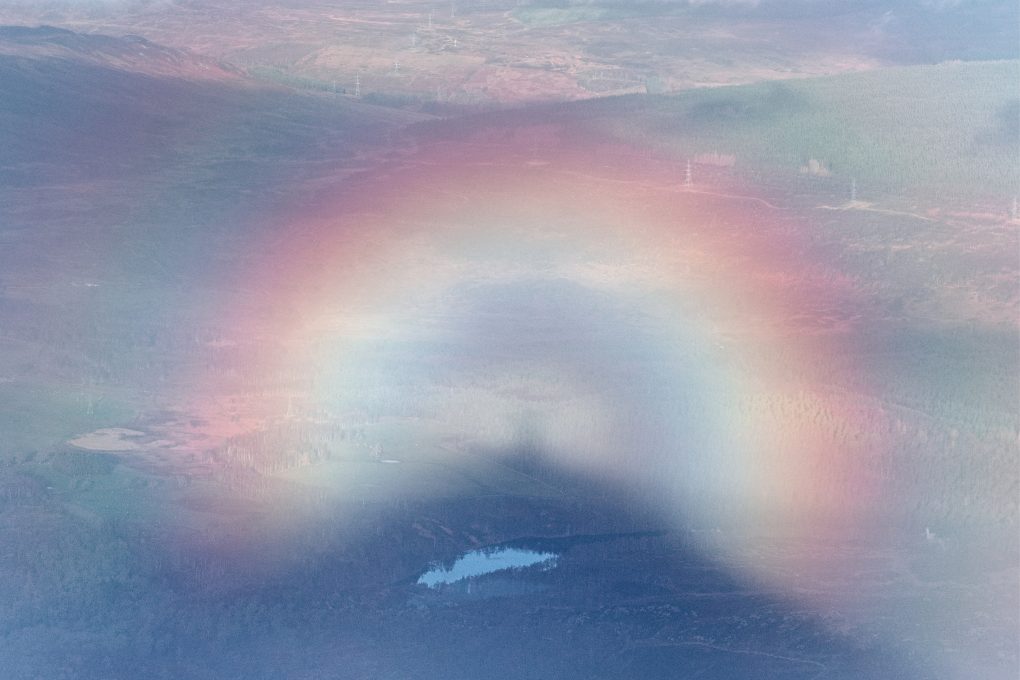
On the way down we paused to admire the surroundings – an interplay of light, mist, undulating lochs and landscape and more mountains.





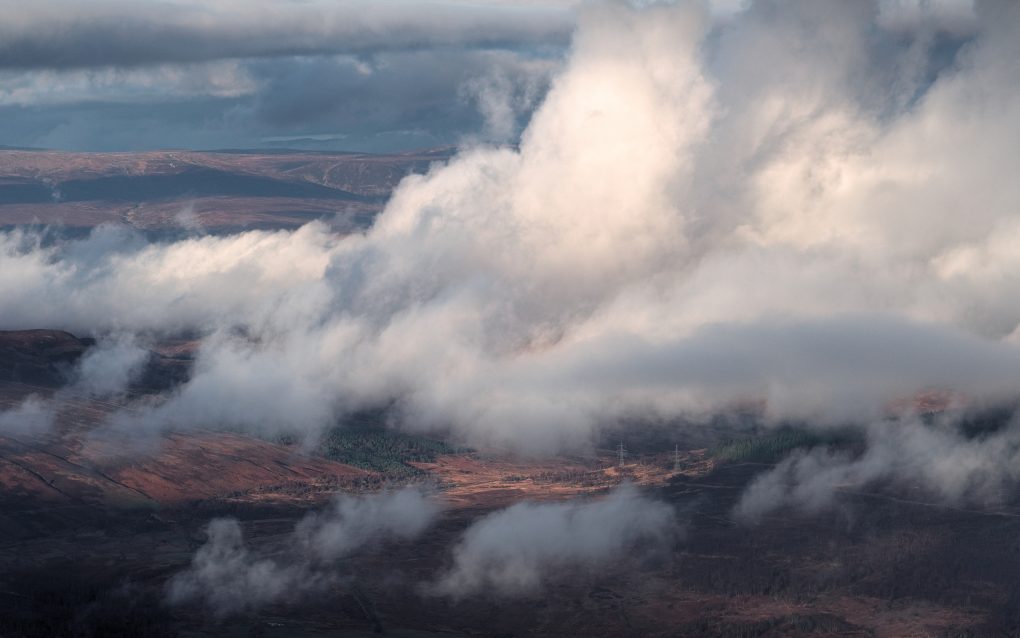
Bring on the mountains – I have climbing to be doing 🙂
Saturday’s involved driving much of the length of the A9 from Perthshire to Inverness and beyond to the Nice Place™, and back down again.
On the return, I broke the journey in two locations I’ve previously admired but never stopped at: one, outside Bunchrew outside Inverness, to admire the clear view along the river estuary to the Kessock Bridge:


Odd: I’ve lived around Perthshire for over a decade and driven this stretch of the A9 many many times, but never explored Ruthven Barracks before. I was fortunate enough to arrive just as the moon was rising in the north-east – a lot larger by eye than it appeared in the photos, but it made a good backdrop to the ruined buildings. Otherwise, in the cold late afternoon light, the ground covered in a dusting of snow, it all looked rather bleak…


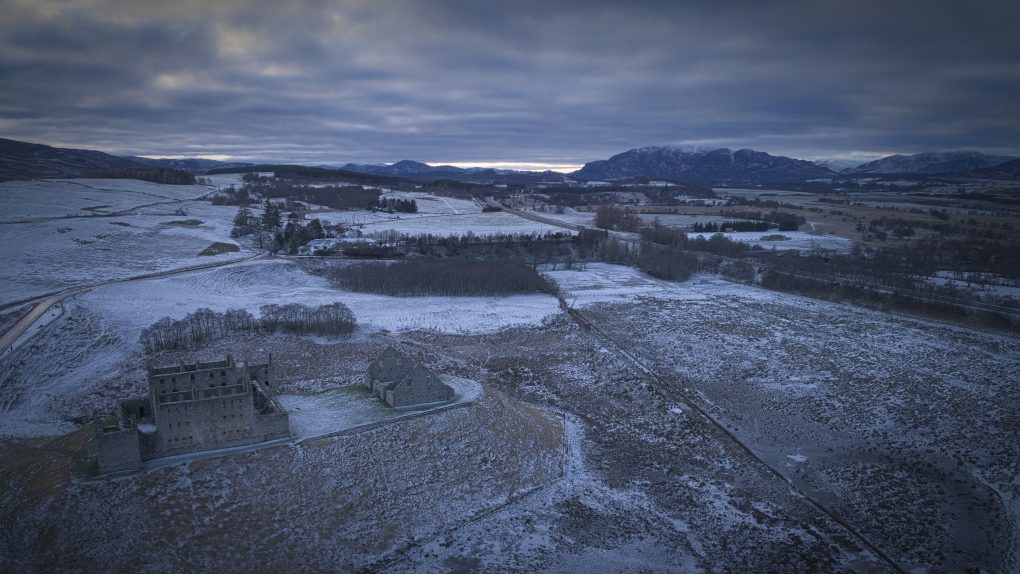
For a final subject, just as I was packing up the drone to leave Ruthven Barracks, I noticed a splash of soft light on very low clouds clipping the Cairngorm mountains in the distance. Long lens; click; got it.
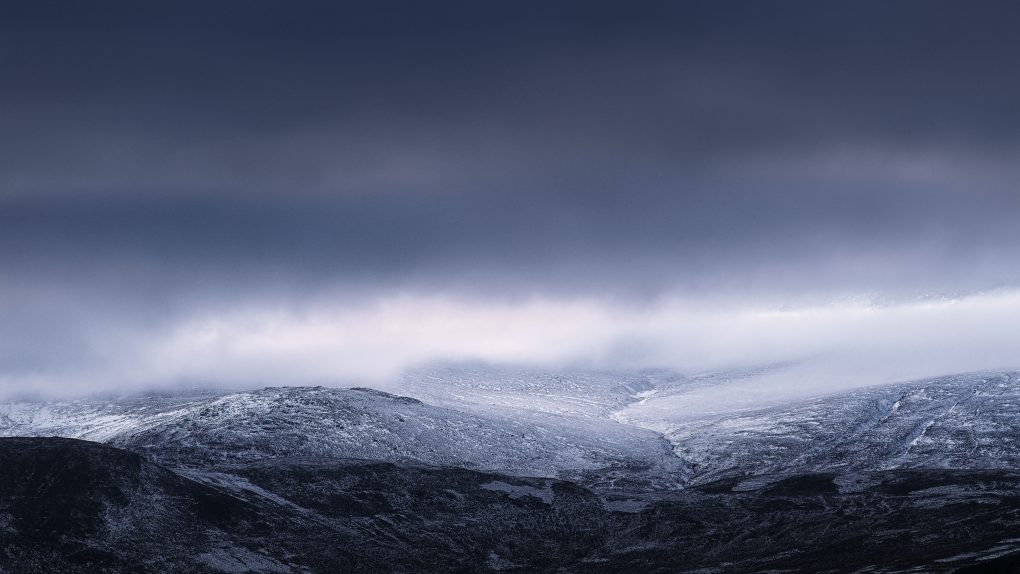

A couple of weeks ago in the middle of December, we were treated to a quick overnight blast of snow. It remains my favourite season for photography, so I staggered up Birnam Hill to fly in the late afternoon light.
Landscapes:


Straight-down abstracts – trees and outlines of the Birnam Burn flowing through the snow:


Ground-level tree abstracts:


As an experiment to help learn my way around the Shotcut video editor, I made a short video of the area too:
As the weather dictated, a slight detour from the east coast away out to the centre and west of the top of Scotland. I explored the road down Strathnaver, starting with a small church at Syre (a distinctive tin-tab construction originally built by the Free Church of Scotland as a mission to nearby Sutherland estate, but now joined to the Church of Scotland since 1929):
Having been there last autumn, the view from the head of Loch Naver was just as compelling (and just as windy)
A few hundred yards north of Altnaharra a small road leads off through Strathmore, passing some beautiful landscape scenes of Ben Loyal across Loch Meadie:
Further along, I discovered a beautiful but thought-provoking view: at Allnabad, a former shepherd’s house, now ruined and roofless, looks out over a barren landscape over the length of Strath Coir an Easaidh to beautiful undulating mountains beyond. Unusually for me, I made quite significant changes to the scene – the real lighting was strongly blue-green (a very Fuji summer landscape colour palette) but it works better with hints of relative colour beneath a pale sepia wash for a classic old-time look. (I’ve also slightly moved the small pile of stones relative to the building.) The resultant photo is called “The Story”, partly as a homage to the Runrig song of the same name, partly because of the sense of time – evolution of the land on geological and sociological timescales.
Continuing north up Strathmore, I found the remains of the broch at Dun Dornaigil – conveniently built beside the road 😉 – on a lovely sunny day, just had to fly the drone up where a location a bit downstream made an excellent composition of river leading to the broch and Ben Hope in the distance.
From there we drove up to the far north coast and followed the A836 east, keeping an eye on the landscape to the south. Ben Loyal makes an unmistakable outline with its four peaks; somewhere nearer to Tongue there was a convenient layby giving a comparatively clear view across to the mountain.
Many moons ago… the parents and I were on holiday around Caithness and having trouble finding the way to Whaligoe Steps. As his tractor turned by the end of the field, we stopped a farmer to ask directions. To southern ears, the instructions sounded memorably like “turn right at the fussky-osk”. With a little thought we established the meaning… and twenty-two years later I still remember the turn of phrase and was pleased to identify the first phone-box in this Spring’s return visit.
Whaligoe Steps themselves are 365 steps down the side of a steep cliff to a former port for offloading herring boats; women would gut the fish and carry it up in barrels.
The place itself is quite an impressive geo with a fault nearby in the rock – strata lines pushed up by thrust – and pleasant views out to sea.
Further down the road are Camster Cairns – quite impressively large piles of rocks with interior chambers, perhaps the oldest buildings in Scotland at 5000yr old.
It had been another ludicrously hot day, with temperatures up over 25-28ºC, so we finished the day’s explorations on the north coast at the Slates of Fulligoe in East Mey, where the setting sun was partially obscured by a thick sea haar – very pleasantly cool.

This was the second evening I’d set out to make a timelapse of the sunset into dusk. At least this time I was prepared for haar coming in off the sea (chose a safer less-cliff-top location near the path back, for starters). It did not disappoint: over the course of an hour the sun moved, the waves came and went, and a huge bank of fog moved in transforming the scene from brilliant sunset reflecting on the water, to complete white-out. All the possible moods of the landscape in barely an hour – quite awesome.
This photo is a temporal flattening of a timelapse sequence – using the intervalometer to shoot HDR brackets 3*±1EV at regular intervals which can be made either into a timelapse video or averaged-out into a still, like this. (The sun itself is blended from fewer images to avoid motion blur.)
A few photos from a trip to Glen Lyon in autumn. An ideal route for an afternoon walk-with-Dog took in 3 distinct kinds of woodland: artificial monoculture (spruce etc, clear barren ground) (fortunately being felled with a view to replacement with native trees), some birch and oak, and (another artificial) an avenue of beech trees.
Anthropocene influence:
Very natural native flora basking in the golden light:
An avenue of beech trees looking quite spooky
I spent a happy evening exploring the Quoig area in Strathearn – the floodplain of the river Earn between Comrie and Crieff, south of the A85. Disused railway line, Sir David Baird’s monument and a luscious sunset. Can’t complain 🙂
I was so awed at the sheer acreage of bluebells (harebells?) at Kinclaven woods on my first visit with friends, I went back a couple of days later with the parents as well. Photos happened. It was still awesome. Also cool – a lovely place to just wander through dappled light amongst the trees. Yay.
Lovely atmosphere:
Great light:
Still feeling very under the weather from a bout of food poisoning, I spent a happy Sunday afternoon walking around Keil’s Den outside Lower Largo, Fife – recommended by the Woodland Trust as a site for seeing bluebells.
It was still a week or two early in the spring for bluebells, but there were a few in evidence, along with a few expanses of unmistakeable white wild garlic.
There’s something pleasantly restorative about a walk in the woods: something about the green hues, dappled light and shade, cool breezes under the trees. It works.
My favourite photo from the afternoon was this strange beech tree – a strong young stem well on its way to producing a new crown of foliage, growing from the remains of an old battered and eroded upright trunk: